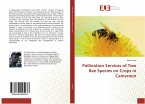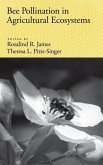Investigations carried out during 2016, 2017 and 2018 in the Tizi-ouzou region on the Apoids pollinating six market garden plants and one fruit tree, the orange tree, revealed that the honey bee is the main pollinator of zucchini, watermelon and orange tree. This bee is also the main visitor to watermelon, alongside four other solitary bee species (Nomada sp. Ceratina saundersi, Ceratina cucurbitina, and Lasioglossum pauxillum). The two Halictidae L. pauxillum and L. malachurum appear to be the main pollinators of lettuce and onion. By contrast, the two legumes, broad bean and chickpea, are mainly pollinated by other species of the Apidae family: Eucera numida, Eucera decolorata and Eucera eucnemidea. The Megachilidae Lithurgus chrysurus is also the most frequent visitor of chickpeas. Our results also show that bees' foraging activity follows the anthesis of the flowers studied. It begins as soon as the first flowers open, and intensifies as the number of open flowers increases.
Bitte wählen Sie Ihr Anliegen aus.
Rechnungen
Retourenschein anfordern
Bestellstatus
Storno








